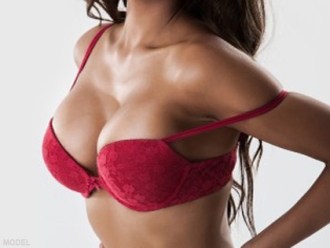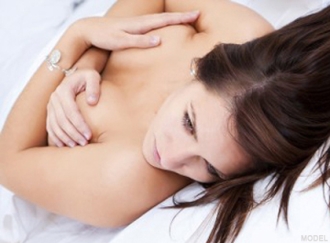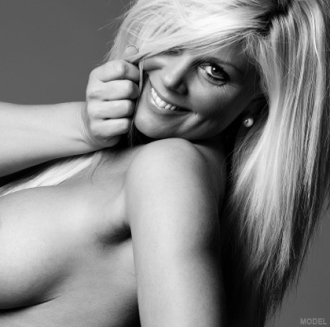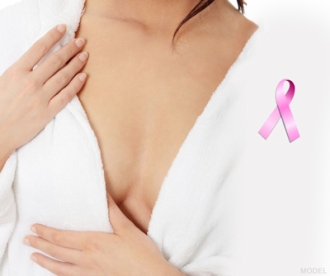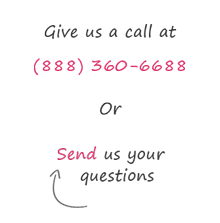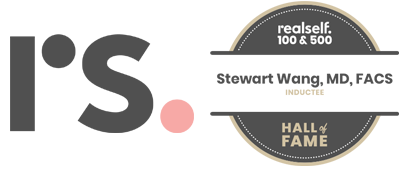Children categories
It is easy for a surgeon to become comfortable performing breast augmentation in Riverside or Upland, CA using the very same technique every time. However, each patient has their own unique body proportions as well as their own idea of an ideal breast contour. For these reasons, Dr. Wang has developed an expertise in a variety of augmentation techniques.
Choosing Your Incision-Placement Method
Dr. Wang is very comfortable using any of the most effective incision-placement methods — transaxillary (an incision made under the arm pit), periareolar (an incision made along the areola border), inframammary (under the breast crease) or transumbilical (around the inner belly-button).
With the transaxillary approach, an incision is made in the crease of the armpit. As with every technique, there are both benefits and drawbacks for the patient when this method is used. While transaxillary avoids leaving a visible scar on the breast, the downside is that any future breast surgeries would require that a second scar be made at that time on the breast itself.
The inframammary approach places the incision on the lower breast, just above the fold. This placement can make for a well-hidden scar on patients who have some fold in their breasts. Inframammary also gives a surgeon the most direct path for implant placement and adjustment. The drawback is that the patient will have a mild scar directly on the breast - though future breast surgeries could make use of this same entry point rather than having to create a second scar in another location.
A periareolar incision is made along the lower border of the areola, that circle of darker pigment surrounding the nipple. Just as with the inframammary method, the periareolar incision leaves a scar directly on the breast, but provides an excellent path for placing and fine-tuning the position of the implant. Also, a periareolar incision creates an ideal angle from which to perform a breast lift, which many women are apt to desire in the future.
A transumbilical incision, sometimes called a TUBA incision, is well-hidden on the upper, inner border of the belly button. Like the transaxillary approach, a transumbilical incision avoids leaving a scar on the breast, but requires that any future breast surgeries be performed using a second incision on the breast itself.
Under or Over the Muscle
Another procedural choice that must be made prior to undergoing a Pasadena breast enhancement is which method should be used to insert the implant — subglandular (which means above the muscle) or subpectoral (which means under the muscle). A subglandular insertion can make the patient recovery time quicker and more pleasant. This placement is also less likely to interfere with the reading of future mammograms. However, the subglandular style comes with a somewhat higher risk for contour rippling, especially in those patients with thin skin or small breasts. When an implant is inserted using the subpectoral approach, the patient may experience a longer and less comfortable recovery period, but is also likely to find that her implant is less obvious and has a more natural appearance.
Choosing the Right Implant
Exactly which implant should be used in your procedure is yet another important decision to be made before undergoing an Inland Empire breast augmentation. Dr. Wang uses implants from two companies with excellent track records, Inamed and Mentor. Combined, these companies offer a selection of over two hundred implant sizes, shapes (round or anatomical), profile positions (low, moderate or high) and textures. Your skin elasticity, breast tissue type and chest wall dimensions will all play roles in determining which implant is the right one for you. Also, some women will prefer silicone breast implants, while others will be best served by saline-filled implants. Until recently, most breast augmentation candidates had no option but saline (salt water) implants. Recently, the FDA re-approved silicone gel implants for general use, allowing Dr. Wang to offer these popular breast implants to women in the Inland Empire and San Gabriel Valley areas. At your consultation, Dr. Wang will discuss which implants are right for you.
Making Decisions about Breast Augmentation
So which incision-placement is best for you? How should your implant be inserted? Which implant should be used? The right surgeon will work with you to determine which strategies can best achieve the results you desire.
Dr. Wang has the experience of performing more breast augmentations than any other procedure. If you would like a consultation with Dr. Wang, we invite you to request a consultation online or call Wang Plastic Surgery at (888) 360-6688.
The following information about Breast Augmentation and Breast Implants is provided for Pasadena, Riverside, and Inland Empire residents courtesy of Dr. Stewart Wang, a board certified plastic surgeon.
What is fat grafting?
Fat grafting involves extracting live fat cells from an area where they are plentiful, such as the abdomen, hips, buttocks, or thighs, and transplanting them to a different area of the body to create newfound plumpness. Fat is a natural substance largely responsible for maintaining a youthful aesthetic and is commonly transferred to the hands, breasts, face, and lips. Fat often contains large amounts of stem cells, which are known for multiplying and developing into different types of cells. These stem cells contribute to the rejuvenating effects of the procedure. After transfer, the fat cells continue to grow in place. Fat grafting is therefore a natural alternative to injecting chemical substances or using implants for enhancement. Results from fat grafting are generally long-lasting because of the use of the patient's own bodily substance.
If you're ready to discuss your fat grafting breast augmentation options, now is a great time to schedule a consultation with Dr. Wang at our plastic surgery offices, serving Southern California including Pasadena, Rancho Cucamonga, Glendora, Chino Hills, Arcadia and Upland. Simply request a consultation online or call Wang Plastic Surgery at (888) 360-6688 today to schedule your appointment.
How is fat grafting performed?
Dr. Wang extracts fat from one part of the body (the donor area) using a small tube, called a cannula. The extracted material must then be processed to remove blood, fluid, and damaged fat cells while maintaining healthy fat cells. Dr. Wang then uses a syringe to meticulously inject these healthy cells into the desired area. The process of making minute incisions with a tiny syringe allows Dr. Wang to carefully sculpt the area thereby allowing for natural-looking results without the use of sutures. Subsequent scarring is therefore generally nonexistent. The patient not only achieves enhancement to the area of the injection, but also a reduction in size at the donor area. Depending on the nature of the procedure, either local or general anesthesia can be used.
How can fat grafting be used to enhance breasts?
Fat grafting is a natural alternative to using implants for breast enhancement. During this procedure, Dr. Wang removes fat from one area of the body and transfers it to the breast region. Some patients who opt for this method will be required to use an expansion device, which utilizes a pumping method to expand the breast area prior to the patient undergoing fat grafting. This suction pump-like device is used several weeks before and sometimes following the procedure. During the actual procedure, fat cells are removed from the donor area, processed to maintain only healthy fat cells, and then injected into the area between the skin and the breast capsule and/or behind the breast in the area between the breast and the chest wall. Because these injection areas are limited in size, volume increase with fat transfer is also limited (to less than a cup size). Therefore this procedure is best for patients seeking a more modest enhancement than that achieved with breast implants. It is especially effective for patients who have previously undergone breast augmentation and want to make their implants appear more natural by blurring the lines between implant and breast tissue. It can also be especially helpful in reconstructing breasts after a mastectomy.
What are possible complications from fat grafting to the breasts?
Fat grafting to the breast area can lead to the formation of nodules or cysts, which materialize as hardened lumps within the breasts. These hardened spots appear on mammograms and can sometimes interfere with breast cancer screening procedures. Similarly, breast implants can affect detection of cancerous formations in the area. Patients undergoing either procedure often require more extensive and frequent breast cancer screenings. Another possible complication is that the newly transplanted fat cells may simply be reabsorbed in the area and therefore volume increase can be lost. This may require a follow-up procedure.
What is the recovery process after fat transfer to the breasts?
Following the procedure, the treated area as well as the area from which fat was extracted is generally swollen for a few weeks. Bruising may also occur. Immediately following the surgery, the patient may have to continue using the surgical pump device on the breasts and will need to wear compression bandages on the area that received liposuction. Patients should refrain from strenuous activity for a few weeks following the procedure. Final results of the transfer are generally seen after about three months, during which time the body may reabsorb some fat cells.
The information about Fat Grafing is provided by Pasadena and Inland Empire plastic surgeon Dr. Stewart Wang, who is certified by the American Board of Plastic Surgery.
Very simply, you are unique. Why choose one of the Pasadena or Riverside, California plastic surgeons who will recommend you opt for the same implants as the woman in the consultation before yours? Dr. Wang is proud to offer over 200 implant options to give you that custom, natural look you've always dreamed of. With so many choices, you may at first be overwhelmed, but rest assured that Dr. Wang will take the time to guide you through the choices you need to make to select the right implant for your Pasadena breast augmentation.
Choosing Saline or Silicone Breast Implants
You've probably heard about the re-approval of silicone implants for general use in 2006. Silicone is a naturally-occurring material that has been used in a variety of household and commercial products for decades. In 1992, after allegations that internal leaking of ruptured silicone implants could cause autoimmune and connective tissue diseases, the Food and Drug Administration (FDA) asked surgeons to voluntarily limit the use of this type of implant in the majority of breast operations. After a decade of extensive silicone implant studies uncovered no serious adverse health impacts, the FDA decided to approve a new generation of cohesive gel silicone implants for all types of breast surgery, including augmentation and reconstruction.
With so many studies supporting silicone safety, don't let fear influence your decision. Instead, focus on your personal preferences for implant look and feel, and discuss these preferences with Dr. Wang. After doing the research, many women prefer cohesive gel silicone implants over saline, believing silicone looks and feels more like natural breast tissue. Dr. Wang is able to achieve very pleasing results no matter which filler material you choose.
Breast Implant Size and Profile
Often, women considering breast enhancement in Pasadena or the Inland Empire spend the most time debating what size of implant to select. It's a personal decision, but at your consultation, Dr. Wang takes a series of measurements that, when combined with your height, weight, and chest diameter, help him to recommend an attractive size based on his experience. You may already have an idea of what you want based on talking with a friend who underwent breast augmentation, but keep in mind that the same exact implant may look entirely different in two different women depending on a wide variety of factors.
While size is certainly important, women often don't realize that implant shape can have a huge impact on how large the breast appears. At your consultation, Dr. Wang will show you samples of various implant widths and depths (or projections). For instance, two implants may be the same size (meaning that they have the same amount of internal volume), but the narrower implant will stick out farther from the chest wall than the wider one. Wider, flatter implants are known as "low profile," and narrower, more projected implants are "high profile." In between, there are moderate and moderate-plus profiles.
Dr. Wang provides his Upland and Pasadena breast enhancement patients with suggestions and expert guidance so that they can make a satisfying choice. Moderate or moderate-plus implants produce ideal results for many patients who find that low profile implants seem too flat or high profile implants project out too far. Ultimately, the decision will be based on which implant size and profile best fits your body type and your goals.
A Textured or Smooth Breast Implant Cover
After selecting silicone or saline to fill the implant, you next need to make a choice about the implant covering material. This outer covering, or implant capsule, will be made of a silicone polymer, but its outer surface can be either smooth or textured. There are studies suggesting that textured capsules decrease the risk of capsular contracture, which occurs when the tissue surrounding the implant tightens and the breast becomes overly firm. However, recent research indicates that there is no difference in capsular contracture rates between women who chose smooth capsules versus those who choose textured ones. The nature of the texturing process requires that textured implants be slightly thicker than smooth implants, so textured capsules may be easier to see and feel through your skin, particularly if your existing breasts are very small.
Smooth breast implants are a great choice for most patients in Upland and Pasadena, California. This implant type has a more natural look and feel, and appears to be more durable. If you are worried about the risk of capsular contracture, this complication can be minimized by using submuscular implant placement and by massaging your breasts following the surgery to minimize scar tissue formation. Dr. Wang will help to walk you through this decision.
Breast Implant Shape
Some implants have a rounded shape, with a consistent amount of material contained throughout the implant capsule. Others are designed to mimic the natural droop of the breast, with more material filling the bottom of the implant than the top. These implants are referred to as "anatomical" or "teardrop" shaped.
While it makes sense that teardrop shaped implants would provide the most natural breast appearance, often round implants give a superior outcome. In fact, 60% to 75% of breast augmentation patients select round implants. At your consultation, Dr. Wang will help you decide on the implant shape that's right for you.
You deserve breast augmentation surgery that provides a natural look and feel. Dr. Wang offers the expertise to deliver the beautiful, individual result you expect. Request a consultation online to consult with the doctor at any of our two plastic surgery offices: the Upland office near Ontario and Rancho Cucamonga in the Inland Empire or our new Pasadena office. Or, call Wang Plastic Surgery at (888) 360-6688.
The following information about breast implant options is provided for Pasadena and Riverside breast augmentation patients courtesy of Dr. Stewart Wang, a board certified plastic surgeon in Southern California.
A breast lift can rejuvenate your figure by restoring the lift and shape that is often lost as gravity takes its toll. Through mastopexy (breast lift plastic surgery), Inland Empire surgeon Dr. Wang raises the breasts and repositions the the nipples. The areolas (the darker skin around the nipples) may be reduced in size as well. Breast lifts have helped hundreds of Dr. Wang's patients feel more confident and satisfied with their breast apppearance. Read what patients are saying about the honesty, respect and personal attention they received from Dr. Wang through every step of the surgical process.
If you're ready to discuss your breast enhancement options, now is a great time to schedule a comlimentary breast lift consultation with Dr. Wang at our plastic surgery offices, serving Southern California including Pasadena, Arcadia and the Inland Empire. You can request a consultation online or call Wang Plastic Surgery at (888) 360-6688 today to schedule your appointment.
Breast lifts offer excellent results for women with smaller breasts that lack firmness or volume; that are experiencing considerable sagging; and whose nipples and areolas are angled downward. Although all breasts sizes can be lifted, smaller breasts usually achieve longer-term results. Women who are planning a future pregnancy should postpone the procedure, since pregnancy can significantly alter the size of a woman's breasts and reduce the effectiveness of a previous procedure. The procedure does not typically interfere with a woman's ability to breastfeed.
Breast lifts are best for candidates with no serious medical conditions who have realistic expectations about the results that can be achieved. When you visit with Riverside, California plastic surgeons, be sure to ask about how they perform the procedure and why they are recommending a particular technique for you.
To help manage and minimize discomfort after surgery, Dr. Wang offers his patients the On-Q PainBuster® Post-Op Pain Relief System. This system consists of a small balloon that pumps anesthetic directly to the surgical site through a tiny tube. Benefits of the On-Q system include:
- Automatic and continuous pain management for up to 5 days
- Reduced potential for breakthrough pain and need for narcotics
- Compact size for discreet and comfortable use
- Simple removal once all medication has been delivered
With the ON-Q system, you can get back on your feet quickly and enjoy all life has to offer.
Breast augmentation, also known as augmentation mammoplasty, is a surgical procedure to enhance the size and shape of a woman's breasts for a number of reasons:
- To enhance the body contour of a woman who, for personal reasons, feels her breast size is too small.
- To correct a reduction of breast volume after pregnancy.
- To bring balance to breasts of unmatched size.
- As a reconstructive technique following breast surgery.
By inserting breast implants behind each breast, plastic surgeon Dr. Wang can increase a woman's bust line by one or more bra cup sizes. Dr. Wang has helped many satisfied breast augmentation patients over the years. Read what former patients are saying about their experience with the caring staff at Wang Plastic Surgery.
If you're ready to discuss your breast enhancement options, now is a great time to schedule a breast augmentation consultation with Dr. Wang at our plastic surgery offices, serving Southern California including Pasadena, Rancho Cucamonga, Glendora, Chino Hills, Arcadia and Upland. Simply request a consultation online or call Wang Plastic Surgery at (888) 360-6688 today to schedule your appointment.
Women who feel their breasts are too small, who have one breast that is larger than the other or whose breasts have become smaller or less firm after childbirth or weight loss are all great candidates for breast augmentation. You must be in good health with no serious medical conditions, and have realistic expectations about what an augmentation can accomplish.
There are two types of breast implants Inland Empire and Pasadena women can choose - saline or silicone gel. Saline implants are commonly available and offer a natural, pleasing look. Silicone gel implants have recently become available to the general public thanks to an FDA decision to re-approve these popular implants in this country (Read Dr. Wang's press release about the approval of silicone implants). Silicone implants have advantages over saline (salt water) implants, such as they look more like natural breasts and generate none of the complaints of rippling or balloon-like appearance sometimes associated with their saline counterparts. At your consultation, Dr. Wang can help you determine which implant is best for you.
To help manage and minimize discomfort after surgery, Dr. Wang offers his patients the On-Q PainBuster® Post-Op Pain Relief System. This system consists of a small balloon that pumps anesthetic directly to the surgical site through a tiny tube. Benefits of the On-Q system include:

- Automatic and continuous pain management for up to 5 days
- Reduced potential for breakthrough pain and need for narcotics
- Compact size for discreet and comfortable use
- Simple removal once all medication has been delivered
With the ON-Q system, you can get back on your feet quickly and enjoy all life has to offer.
What are the benefits of an Inland Empire breast augmentation?
In terms of physical enhancement, breast augmentation improves the volume, shape and beauty of a woman's breasts. It is often used to correct the imbalance in breasts that are disproportionate in size. When combined with a breast lift, a breast augmentation can also correct the sagging that often occurs after childbirth or weight loss.
Breast augmentation can mean so much more than just physical changes. A new study by a nurse researcher at the University of Florida demonstrates what most breast augmentation patients have discovered firsthand: ample, curvaceous breasts can have a profound impact on their lives. In a study of 84 patients, the College of Nursing assistant professor discovered that gains in self-esteem and sexual satisfaction were reported by the majority following breast augmentation surgery. Read more about the study from the story, Is bigger better? Breast surgery linked to boost in self-esteem and sexuality.
How is a breast augmentation performed?
Dr. Wang believes it is important for a surgeon to take time to get to know each patient's unique circumstances before determining which procedural methods would best achieve the results that patient desires. There simply is no single, cookie-cutter approach that works best for every patient. To better understand some of the procedural choices that you and Dr. Wang will determine together, please read our page Tailoring Breast Augmentation to the Individual Patient.
Once these important preoperative decisions have been made and you arrive for your augmentation, you will be put under general anesthesia for your comfort and safety. Dr. Wang will make a small incision in one of four places — the crease beneath the breast, around the areola, under the armpit or inside the bellybutton. He will make very effort to place the incision in an inconspicuous location.
Reaching through the tiny incision, Dr. Wang will gently lift the skin and breast tissue to create a pocket in which to place each implant. The implants will be inserted either directly behind the breast tissue or beneath the muscle of the chest wall. Once the careful placement of each implant is complete, both incisions are stitched shut and a gauze bandage applied to assist the body's healing processes.
What is the TUBA method?
The acronym "TUBA" stands for "trans-umbilical breast augmentation." It refers to the method which uses an incision site at the very edge of the belly button. In this procedure, Dr. Wang makes a narrow pathway to the breast under your abdominal skin, then centers the implant under your nipple.
The most obvious advantage of the TUBA procedure is a tiny scar that's well hidden away from the breast. Other positives include the potential for a shorter surgery time and minimal damage to normal breast tissues. However, TUBA breast enhancement isn't for everyone. When you come in for your consultation, Dr. Wang will discuss all options with you.
How long does a breast augmentation take?
Breast augmentations generally require one to two hours of surgery.
What can I expect after my Pasadena breast enhancement?
You may experience soreness and fatigue for a few days after your surgery, but this usually lasts only 24 to 48 hours. You will experience scarring — firm and pink — for at least six weeks. Though they may remain for several months or get wider, these scars will fade with time. Swelling in your breasts may last three to five weeks. Occasionally, patients experience a burning sensation in the nipples which subsides as quickly as the bruising fades. Stitches will be removed in a week to 10 days, but swelling in your breasts may require three to five weeks to subside.
What is the recovery period like?
Stitches will be removed in a week to 10 days. If you have been required to wear gauze dressings, they will be removed and Dr. Wang may ask that you wear a surgical bra. You should continue any routinely scheduled mammograms, however, be sure the technician performs Ecklund scans for a more reliable reading. For more recovery information, please read Dr. Wang's advice about recovery from surgery.
How long before I can return to normal activity?
Most of our patients will return to work in a week, depending on the level of activity their job requires. It is important to follow Dr. Wang's instructions for resuming exercise and normal activities. You may want to avoid physical contact for two to three weeks, since your breasts are likely to be sensitive to direct stimulation. When your breasts are no longer sore, direct contact is fine.
The information about Breast Augmentation and Breast Implants is provided for women considering breast augmentation in Pasadena or the Inland Empire courtesy of Dr. Stewart Wang, board-certified plastic surgeon.
Women with very large, pendulous breasts may experience a variety of medical problems — from back and neck pain and skin irritation, to skeletal deformities and breathing problems. Bra straps may leave indentations in their shoulders and large breasts can make a woman or a teenage girl feel extremely self-conscious. Breast reduction, technically known as reduction mammoplasty, is designed for such women. The procedure removes fat, glandular tissue, and skin from the breasts, making them smaller, lighter and firmer.
Women who have a breast reduction from Pasadena, Glendora, Chino Hills, Alhambra and Upland often say it's the best decision they ever made, and they wonder why the waited so long to have the procedure. You don't have to wait any longer. Start your breast reduction process now by scheduling a consultation with Dr. Wang. There is no obligation to have the surgery, so let us discuss your options with you. Call Wang Plastic Surgery at (888) 360-6688 today to schedule your appointment.
Breast reduction produces the quickest body-image changes of all plastic surgery procedures available. It is best for patients whose breasts are fully developed and who are emotionally prepared for the dramatic changes in their appearance. Candidates are advised to discuss their expectations and achievable results with Dr. Wang prior to the surgery.
What are the benefits of a breast reduction in the Inland Empire?
Breast reduction can be used to relieve the back and neck pain, skin irritation, skeletal deformity and breathing problems often associated with large breasts. It also relieves the discomfort of identations left in the shoulders. After breast reduction, the breasts appear smaller, firmer and shapelier.
Will insurance cover my breast reduction?
It depends. While most insurance companies never pay for cosmetic procedures, in some cases breast reduction can be deemed medically necessary and consequently covered by insurance. Coverage depends on such factors as your symptoms and the type of health insurance plan you have. In some cases, an insurance company will pay for breast reduction once the patient has satisfied all required co-pays. In other situations, the patient will be responsible for all costs associated with the surgery.
Because there are no hard and fast rules when it comes to insurance coverage for breast reduction, please call us at (888) 360-6688 so we can review your case and give you specific details about your insurance coverage for the consultation and the procedure itself. Our goal is to help you maximize your insurance benefits before having to pay for breast reduction out-of-pocket.
How is a breast reduction performed?
There are several techniques for breast reduction. In rare cases — when only fat needs to be removed — the patient will only require liposuction in Riverside or the San Gabriel Valley. Most commonly, the procedure is performed while the patient is under general anesthesia. Typically, Dr. Wang makes an anchor-shaped incision around the areola that is extended downward to follow the curve of the crease underneath the breast. Once the incision is made, Dr. Wang removes excess glandular tissue, fat and skin. Liposuction may also be used to remove excess fat from the armpits.
After excess skin and fat are removed, the nipple and areola are then moved into a new position. Usually, the nipples remain attached to the blood vessels and nerves. When Dr. Wang is satisfied with the position of the nipples and areola, the skin from both sides of the breast is stretched down and around the areola to form the new contour of the breast. The area is then closed with stitches around the areola, downward and along the crease of the breast. In some cases, the vertical scar can be eliminated.
How long does a breast reduction take?
Breast reductions usually require two to four hours of surgery per breast.
What can I expect after a breast reduction?
You may experience pain for the first few days, particularly when moving about or coughing. Swelling and pain may also occur with your first menstruation after the procedure. You are likely to also experience discomfort for a few weeks and may encounter random, shooting pains for a few months. You may also notice numbness in the nipple and areola area that lessens over time. Pink or red, lumpy scars from the incisions will usually last about six months before fading. It may take six months to a year before your breasts settle into their new shape. Read Dr. Wang's advice about recovery from surgery.
What is the recovery period like?
During the recovery period, you will be encouraged to get out of bed for short periods of time. It may be necessary for you to sleep on your back to avoid unnecessary pressure on your breasts. Surgical drains, if any, will be removed a day or two after surgery and surgical dressings may also be changed or removed. You will be asked to wear a surgical bra for a few weeks until swelling and discoloration diminishes. Stitches are generally removed in stages lasting a period of about three weeks. Straining, lifting and bending during this time is not recommended.
How long before I can return to normal activity?
Most patients can return to work in a couple of weeks, depending on the level of physical activity your job requires. Typically, you can resume most of your normal activities, including mild exercise, after several weeks. Sex should be postponed for at least one week, but Dr. Wang may advise that you wait longer. It is recommended that your breasts be handled extremely gently for at least six weeks.
The following information about Breast Reduction is provided for Pasadena and Inland Empire residents courtesy of Dr. Stewart Wang, a board-certified plastic surgeon.
Reconstruction of a breast that has been removed due to cancer or other diseases is one of the most rewarding surgical procedures available today. New medical techniques and devices have made it possible for surgeons to create a breast that can come very close in form and appearance to matching a natural breast.
Many breast reconstruction patients in Pasadena, Arcadia, and Upland, California want to learn more about whether insurance will cover their reconstructive procedure. Insurance coverage for breast reconstruction depends on many factors. While most insurance companies never pay for cosmetic procedures, coverage for reconstructive procedures varies greatly based on your insurance plan and the treatment you require. In some cases, an insurance company will pay for a breast reconstruction procedure once the patient has satisfied all required co-pays. In other situations, the patient will be responsible for all costs associated with the surgery.
Because there are no hard and fast rules when it comes to insurance coverage for the reconstructive procedures we offer, please call us at (888) 360-6688 so we can review your case and give you specific details about your insurance coverage for the consultation and the procedure itself. Our goal is to help you maximize your insurance benefits before having to pay for your breast reconstruction procedure out-of-pocket.
The information about Breast Reconstruction is provided for Pasadena and Riverside residents courtesy of Dr. Stewart Wang, a board certified plastic surgeon.



